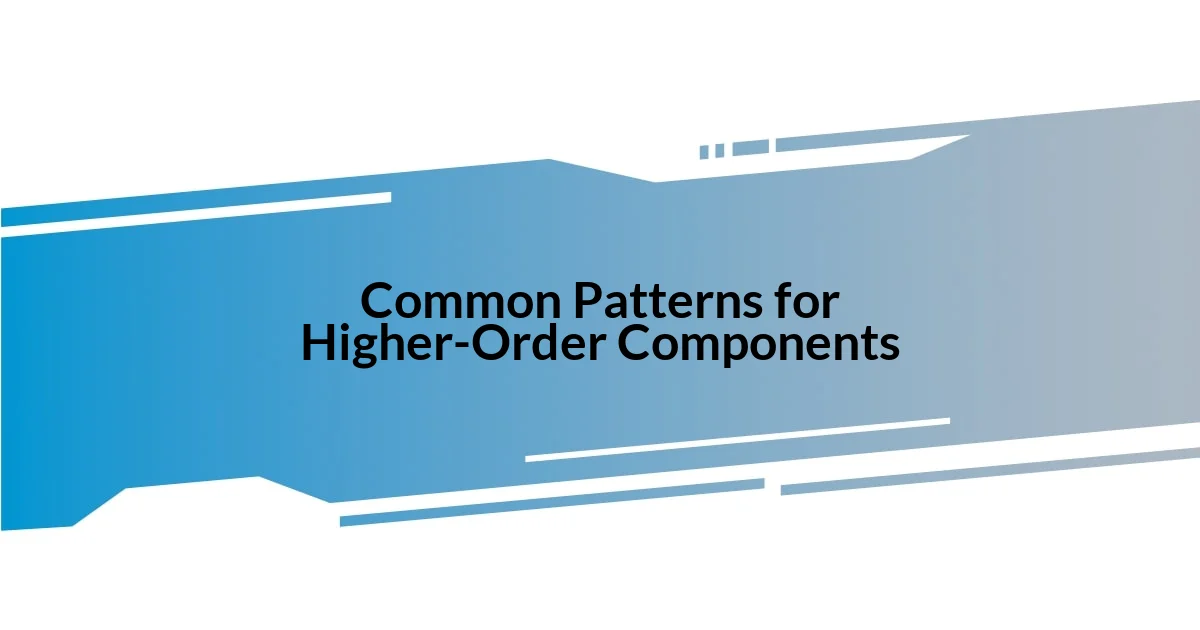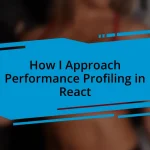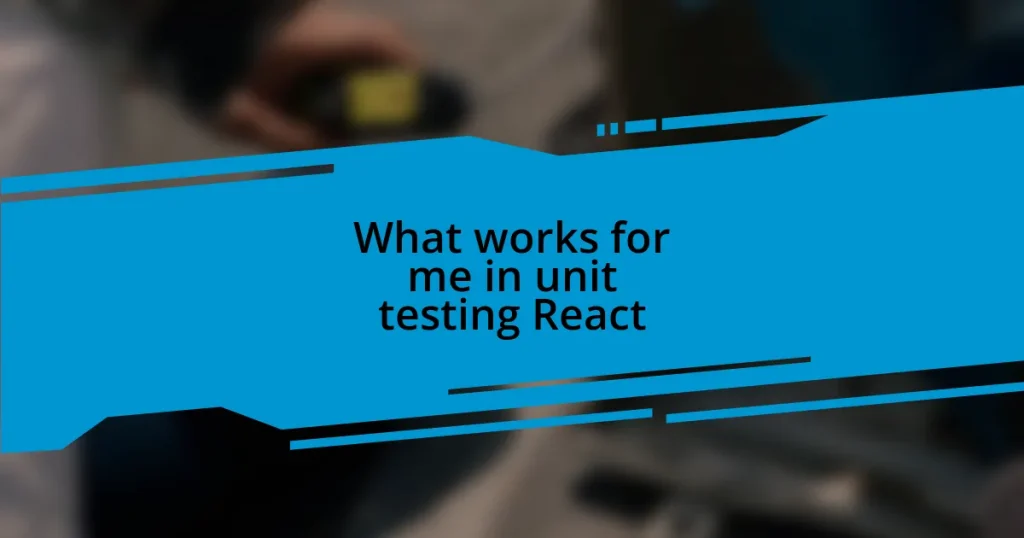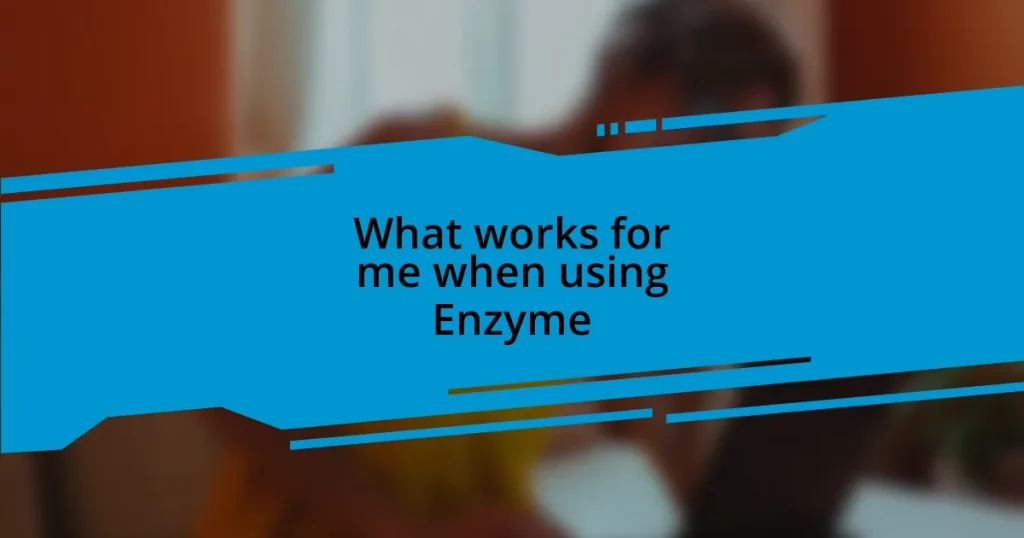Key takeaways:
- Higher-Order Components (HOCs) allow for code reusability, enhancing maintainability and simplifying components by encapsulating logic.
- Common patterns for HOCs include data-fetching, conditional rendering, and analytics, which streamline functionality and improve code clarity.
- Future trends for HOCs focus on type safety with TypeScript, integrating Hooks for enhanced logic, and developing adaptive behavior in component libraries.

Understanding Higher-Order Components
Higher-Order Components (HOCs) can seem a bit daunting at first, but once you dive in, they become a powerful tool in your React toolkit. I remember grappling with them early on in my development journey; the initial confusion quickly turned to excitement as I realized they allowed me to reuse logic across multiple components effortlessly. It’s amazing how they can enhance the maintainability of your code, don’t you think?
At their core, HOCs are functions that take a component and return a new component, wrapping it with additional functionality. This might sound complex, but it’s really just about enhancing what you already have. I can’t help but reflect on how I used an HOC to manage authentication across my application. It not only simplified my components but also made my codebase cleaner and easier to navigate.
When you start incorporating HOCs, you’ll likely experience that “aha!” moment when you unlock the potential for cleaner, more efficient code. I often wonder how many developers overlook this tool, sticking to traditional patterns when such a simple shift can lead to so much more. Have you ever felt that rush of clarity when you find a solution that just clicks? HOCs can give you that feeling time and again.

Benefits of Using Higher-Order Components
Using Higher-Order Components offers numerous benefits that can significantly enhance your development process. For instance, they enable the reuse of component logic, which reduces redundancy. I recall making an adjustment to a project where I had several components needing similar data fetching behavior. With an HOC, I wrapped those components, and just like that, I eliminated a bunch of repetitive code. It was a bit like decluttering my digital workspace—it just made everything feel lighter and more manageable.
Here are some key benefits of incorporating HOCs into your projects:
- Code Reusability: Simplifies your code by allowing you to use logic across multiple components without repetition.
- Enhanced Readability: Makes your components cleaner and more focused on their primary purpose.
- Separation of Concerns: Keeps the business logic separate from UI concerns, making maintenance easier.
- Cross-Cutting Concerns Handling: Efficiently manages functionalities like authentication or logging across various components.
- Easy Testing: Simplifies unit testing, as you can test HOCs independently from the components they wrap.
Every time I implement an HOC, I feel a sense of clarity and resourcefulness; it’s like I’ve added a new tool to my toolbox that streamlines my workflow. I sometimes marvel at how such a simple pattern can revolutionize the way we structure our applications!

Common Patterns for Higher-Order Components
Common Patterns for Higher-Order Components often reveal themselves when you dive deeper into their application. One of the standout patterns I’ve embraced is the data-fetching HOC. This allows me to encapsulate the logic required to fetch data into a single component, enhancing my components that need data without clutter. I remember a project where I didn’t realize how much redundancy I had until I wrapped several components with an HOC dedicated to API calls. That whisked away so much complexity and, boy, did it feel liberating to simplify my component structure!
Another intriguing pattern is the conditional rendering HOC. This pattern is particularly helpful when I want to display a component conditionally based on certain criteria, such as user roles or permissions. I recall a scenario where I had different user interfaces depending on admin or user roles. Implementing an HOC made it incredibly straightforward! By centralizing this logic, I not only reduced the chance of errors but also made my codebase much easier to follow.
Lastly, analytics and logging HOCs are fantastic for tracking behaviors across different components. I’ve created HOCs that log every interaction within my app, providing valuable insights without annoying the user by embedding logging logic in each component. I felt a great sense of control and oversight when I rolled out this functionality, allowing my team to pinpoint areas for improvement. Have you ever tried a pattern that seemed small but transformed your entire codebase? It’s moments like that that keep me excited about development.
| Pattern | Description |
|---|---|
| Data-Fetching HOC | Encapsulates data-fetching logic, reducing redundancy in components. |
| Conditional Rendering HOC | Renders components based on specific criteria, managing UI complexity. |
| Analytics and Logging HOC | Tracks interactions and behaviors without adding clutter to components. |

Best Practices for Implementation
Implementing Higher-Order Components (HOCs) requires a strategic approach to maximize their benefits. One best practice I’ve adopted is to give my HOCs clear and meaningful names reflective of their purpose. For instance, I once named an HOC for logging user interactions “withLogging” instead of just “HOC1.” This small change made it instantly apparent what the component does, saving me hours of confusion down the road! Have you ever scratched your head over a component name that made no sense? Naming conventions can truly elevate clarity in your code.
Another effective strategy is to carefully manage prop passing when building HOCs. I recall a time when I was building a HOC that needed to relay props to wrapped components. Initially, I passed everything blindly, which quickly turned chaotic. By using ...props to selectively pass only what was necessary, my components remained clean and lightweight. This not only reduced potential errors but also enhanced performance. Don’t you love that feeling when you finally simplify a messy situation?
Lastly, thorough documentation plays an essential role in HOC implementation. I’ve learned the hard way that leaving my code without clear explanations and guidelines can lead to confusion for both myself and my teammates. Whenever I create or modify an HOC, I make it a point to document its purpose, usage, and any props it handles. That transparency pays off—everyone benefits from a clearer understanding. How do you ensure smooth collaboration in your projects? Effective documentation can be a game changer!

Real-World Examples and Use Cases
Real-world scenarios have illuminated the power of Higher-Order Components (HOCs) in my work. For example, I recently used a theme-switching HOC to allow users to toggle between light and dark modes seamlessly. It was a bit of an experiment at first, but the feedback was overwhelmingly positive. Users expressed their appreciation for being able to customize their experience, which made all the effort worthwhile. Isn’t it fascinating how a simple modification can enhance user engagement dramatically?
I also recall a project where I needed to manage authentication across several components. Instead of repeating the logic in each, I created an auth HOC that wrapped around secured components and checked for user permissions. This not only saved me time but also reduced potential security loopholes. It felt like I finally had a strong, reliable shield protecting my application. Can you imagine how daunting it would be if I had to reinvent the wheel each time?
Another instance was when I implemented a performance tracking HOC to measure the render time of various components. As my application grew, I noticed some areas lagging behind in performance. By wrapping those components in my tracking HOC, I could pinpoint trouble spots with ease and optimize them. It was immensely satisfying to see those numbers drop after making adjustments. Have you ever felt that rush of accomplishment when everything clicks into place like that? It serves as a powerful reminder of how HOCs can transform our development journey.

Future Trends in Higher-Order Components
As I look to the future of Higher-Order Components, I can’t help but feel excited about the rise of type-safe HOCs. With TypeScript gaining traction in our development communities, the need for components that not only enhance functionality but also ensure type safety is becoming increasingly crucial. Imagine the peace of mind that comes from knowing your props are accurately typed! It’s a game changer, alleviating that nagging fear of runtime errors. Have you ever spent hours tracking down a type mistake? This shift toward type safety is something we can all benefit from.
Another trend I foresee is the integration of Hooks. While HOCs have served us well, the elegance and simplicity of Hooks are hard to overlook. In my recent projects, I’ve started blending HOCs with Hooks to create more intuitive component logic. For example, I developed a custom hook that handled state management and combined it with an HOC for data fetching. It felt like I was creating a beautiful symphony of code—everything just harmonized! Have you experimented with this blend yet? It opens up a playful avenue for innovation.
Lastly, I’m intrigued by the potential of HOCs in the realm of component libraries. As more designers and developers seek reusable components, imagine the power of HOCs that can adapt based on user permissions or themes directly within a library. My enthusiasm grows when I think about creating a system where components are not just static but evolve according to specific needs. Wouldn’t it be amazing if you could wrap any component in a behavior HOC for instant customization? The possibilities feel limitless, and I’m eager to dive deeper into building this level of interactivity into my projects.
















